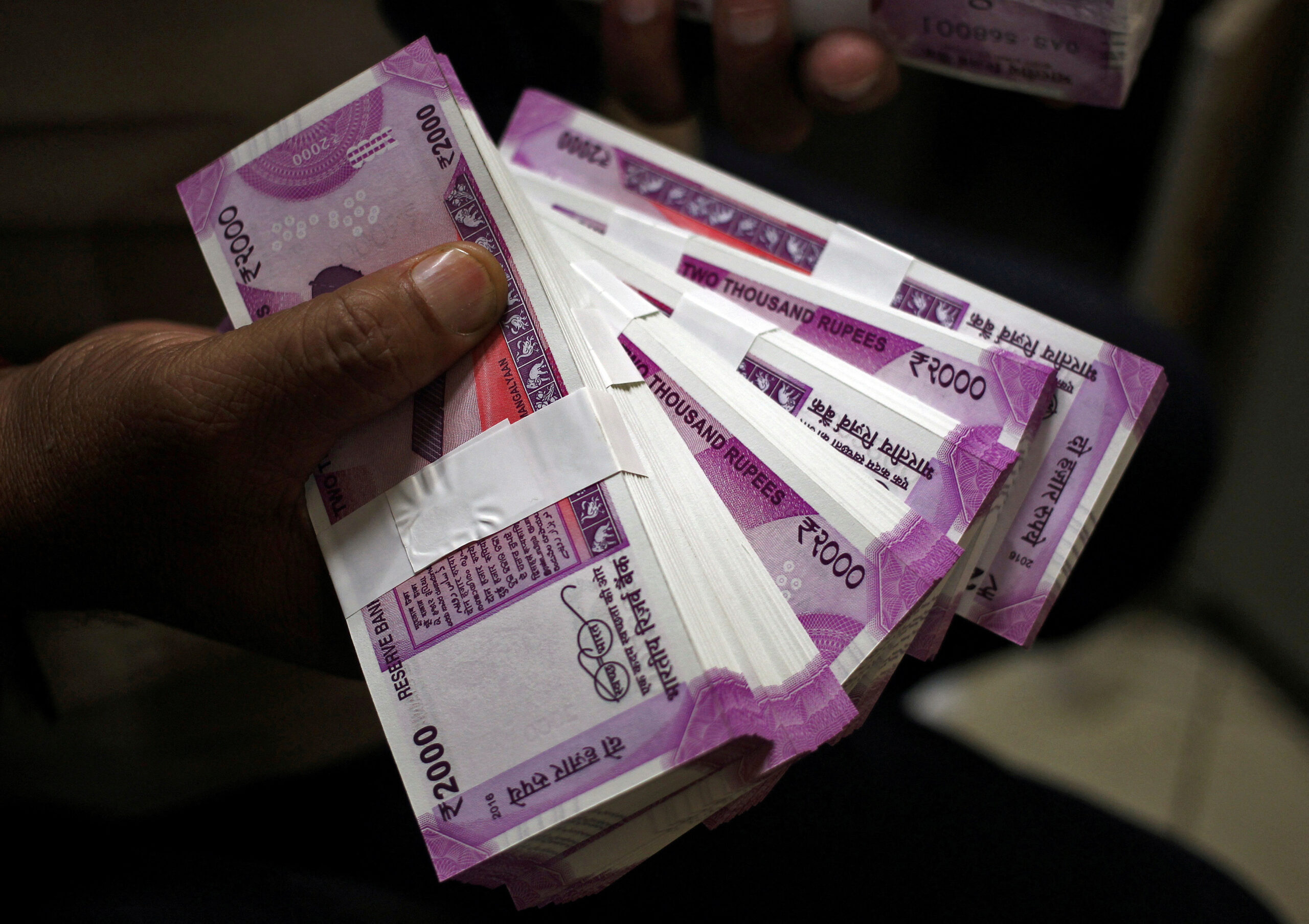Moving beyond payment settlements in dollars has long been on the Kremlin wish list — an objective clearly fuelled more by geopolitical aversions to the United States than economic considerations. Russian leaders have sought this over the past twenty years with a wide range of methods, and with mixed and often unforeseen results.
In the first half of the 2000s the main declared task declared was the convertibility of the ruble; the idea was to turn it into a currency that could be taken seriously on global currency markets. Putin, in his address to the Federal Assembly in the spring of 2003, said: «The country needs a ruble that circulates freely on international markets. We need a strong and reliable connection with the world economic system [and therefore] a major task that must be solved together is to achieve full convertibility of the ruble. Convertibility is not only internal, but also external. Not only for current, but also for capital operations».These days it is difficult to say how realistic such a goal seemed then. It is only obvious now that nothing was done to achieve it: clearly, no international lending market for the ruble was built. The Russian economy also did not grow for long, reaching the late Soviet level of GDP by 2007−2008 and stopping at it, it seems, forever. So shifting from the task of turning the ruble into a reserve instrument in Moscow, the Kremlin then sought to peg it to non-Western currencies, primarily to the Chinese yuan. By the end of 2021, the Bank of Russia placed the equivalent of $ 104.8 billion in yuan, which accounted for 31% of the reserves that all the world’s central banks held in this asset.
With the outbreak of the war, the situation became critical. Russia had to abandon many settlements not only in dollars, but also in euros; these can no longer be carried out through sanctioned banks. It was then decided to collect new reserves (if they manage to accumulate them at all) exclusively in Chinese currency. However, this does not mean that the dollar should be forgotten, just as it does not mean the Russian ruble can become a substitute for world currencies and be used in a wide range of payments with foreign counterparties. Rather, Russia is gradually shifting its focus from the currencies of «unfriendly» countries to other instruments, but the ruble is used only in cases where other options are not fundamentally considered. We, for example, remember Putin’s demand that European gas buyers pay for it in rubles; spectacularly stated, it did not affect the situation for long, because after a few months, gas exports to Europe themselves ended.
Rubles for Rupees
An instance of how an arbitrary decision to switch to settlements in national currencies does not work is Moscow’s attempt to trade in rubles or rupees with India, for which Russia, by the end of 2022, has turned from the 25th to the fifth trading partner in terms of overall volume of trade. Back in November 2022, Delhi and Moscow announced that everything was ready to transfer trade to national currencies. However, after several months of various attempts to set up a new system, it was decided (maybe not completely) to refuse it. The reasons for this are noteworthy.
First of all, one must take into account how Russian trade remains largely in surplus. Last year, Russia supplied India with goods (mainly, of course, energy) for $ 37 billion, and bought Indian goods for only $ 2.5 billion (in the first quarter of this year, the situation only worsened: exports from Russia reached $ 14 .9 billion, and imports from India did not even reach $ 1 billion). Therefore, India cannot accumulate a significant amount of rubles to buy Russian oil and other raw materials (in this context, it is worth recalling that the «dollarization» of trade in Asian countries, which is now at an extremely high level at 79.1%; that largely due to having a stable surplus in trade with the United States, from which dollars come, which are then used both to form reserves and to pay for imports). Hypothetically, Indian companies can buy rubles for subsequent payment for Russian goods, but India does not have the financial infrastructure for such operations: at the end of last year, Sberbank and VTB opened correspondent accounts in rupees in their own subsidiary banks in India, but the process stopped there. That is without even noting how over the past year in Russia the currency legislation has changed many times, and the transfer of proceeds and profits of foreign companies abroad has consistently become more complicated; thus, today few people invest in the Russian ruble: they could buy it to pay for gas, as Putin demanded, but hardly anyone is ready to invest against payment for future deals. So it is still a long way off from a widespread use of the ruble in trade with India (as well as with any other country).
On the other hand, the Indian currency is not widely used, not only in international trade. It is by no means always accepted as payment for deliveries by Indian producers themselves: in 2021, about 88% of Indian exports were denominated in dollars, which is significantly higher not only than the global average (slightly more than 40%), but also the indicator for Asia-Pacific countries. Therefore, the use of the rupee turned out to be just as unlikely as the ruble. To this we can add that transfers in rupees abroad are extremely regulated, and therefore quite difficult: the first large-scale attempt to liberalize this regime was made only in November 2022 — and that, according to Indian representatives, it will affect so far only industries whose exports of products the government deems necessary to increase. Indian experts emphasize that attempts to organize settlements with Russia in rubles and rupees were initially doomed to modest results, so there is nothing special about hanging 40 billion rupees owned by Russian companies (and subsequent dissatisfaction of Russian leadership due to it). By itself, this problem will eventually be almost certainly solved, but one should not expect the liberalization of the Indian payment system: the transformation of the rupee into a freely convertible currency is not yet on the agenda of the authorities in Delhi. Indian financiers are confused by the huge foreign trade deficit, reaching 60% of exports and the likely settling of rupees abroad, making the currency vulnerable to the actions of international speculators.
In such conditions, a question arises: does the Russian «romance» with India mean the anticipation of the failures of «de-dollarization» on all fronts? Although in general it does not seem to me that the global hegemony of the dollar and the euro in world trade will be shaken, if there are risks associated with sanctions, it could prove possible to use well-proven alternative systems of payments. Yet here we can recall the difficulties with paying India for delivered Russian-made military equipment, which was seriously delayed due to the fear from the Indian side of falling under secondary US sanctions, which led to the actual curtailment of military-technical cooperation between the two countries.
The Yuan, HKD, or the Saudi Riyal?
A more credible alternative payment alternative could be the Yian. Since 2012, it has been allowed to be used in Chinese foreign trade, and now it denominates about 20% of its total volume (although this figure rose above 30% at the end of 2014 on initial enthusiasm). At the same time, since 2016, the Chinese currency has been included by the International Monetary Fund in the SDR currency basket, which proves its international recognition. The offshore yuan bond market is gradually developing and liberalizing. And, most importantly, China is Moscow’s most important trading partner, from which Russia buys goods and services worth almost $ 80 billion a year. Therefore, the accumulation of reserves in yuan now looks relatively reliable — as far as anything can be reliable in today’s Russia and around it. The Chinese currency is also used in international settlements, although its share in global trade in goods does not exceed 4.5%, and in international currency exchange transactions — 7%. But these indicators are quite sufficient for Russia to rely on it, with its 2.6% share in world trade. China has recently been actively and successfully establishing a regime of bilateral settlements with countries across Africa, the Middle East and Latin America — so the yuan, unlike the rupee, looks attractive.
However, one should not think the Chinese currency has no alternative today. There are a number of currencies in the world that can literally replace USD for Russia, since their issuing countries have significant financial reserves and powerful banking systems, and their currencies have long been pegged to the dollar. Here, first of all, attention can be paid to the Hong Kong dollar (its exchange rate against the dollar did not change even during the years of the «Asian» crisis), the Saudi riyal or the UAE dirham (the latter is already used for clearing, including in settlements with India). Only these three currencies are backed by $ 1 trillion reserves, and the presence of the Hong Kong dollar in foreign markets is comparable to the role of the yuan. The relevant countries are not going to impose any sanctions or restrictions on Russia, so if the task is to avoid using the dollar, then working with these tools seems very attractive.
The war unleashed by the Russian leadership in Ukraine has made Russia a global pariah, both politically and economically. In a little more than a year, Russia has turned from a raw material appendage of the developed world into a raw material appendage of developing countries, and its financial system is reorienting itself to the use of marginal payment instruments. This undoubtedly represents a step backwards compared with the state that was achieved during the period of reasonable integration of the country into the world economy. At the same time, the issue of settlements looks absolutely secondary and insignificant against the background of a catastrophic drop in foreign investment, technological degradation and destruction of the modern system for protecting property rights (including intellectual property rights). Russia — and this can be said quite definitely — will not be able to make its currency a global means of payment; nor will it be able to undermine the dollar hegemony by its actions, but it is possibly capable of finding options for ensuring safe and relatively efficient settlements with the replacement of the dollar or the euro with the yuan or dirham.










